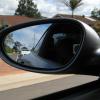Oil catch can for GTR
Announcements
-
Similar Content
-
Latest Posts
-
All 3 I guess. The car came with the JASI Aero 4 door Type R Full Kit unpainted so this was one thing at the top of my list to complete then I noticed there were body panels parts for this kit so i picked them up along with some black mesh to fill in the front bumper and front side air vents. car is at a paint and body shop atm completing this work. Next I will be addressing the internal bells and whistles, great summer project I can do with the kids. full interior removal - ,boys car sound deadening - pads and spray ,boys stereo, sound, lighting - Big 3, GTT or bigger alternator ,kids head lining - dye black add star lighting mod ,daughter. That's it for the next 5-6 months. I have some motor maintenance work i have to plan out. oil filter relocation, gaskets, mounts. beyond that, mind is starting to turn over if i can use a DET intake plenum, block off turbo ports & pipe in a air intake.
-
roller coaster of a ride. Alarm system was removed & main harness was repaired where possible. still no fix just random successful starts. moved on to the replacing the ignition switch and relay. well all this troubleshooting & repair has been going on, the car is at a paint and body shop being pushed around. Ive been going down there on odd days after work to get it sorted.
-
5th November if you want to come out for a spin wakfield
-
PROBLEM WAS BROKEN COOLANT SENSOR!!! Replaced with a new one and its running mint.
-
I think he was only proposing to use the wire, not the sender. Simply because it runs from the right place to the right place. Personally, I wouldn't hack up the factory wiring like that. I'd just lay in the Defi loom.
-









Recommended Posts
Create an account or sign in to comment
You need to be a member in order to leave a comment
Create an account
Sign up for a new account in our community. It's easy!
Register a new accountSign in
Already have an account? Sign in here.
Sign In Now